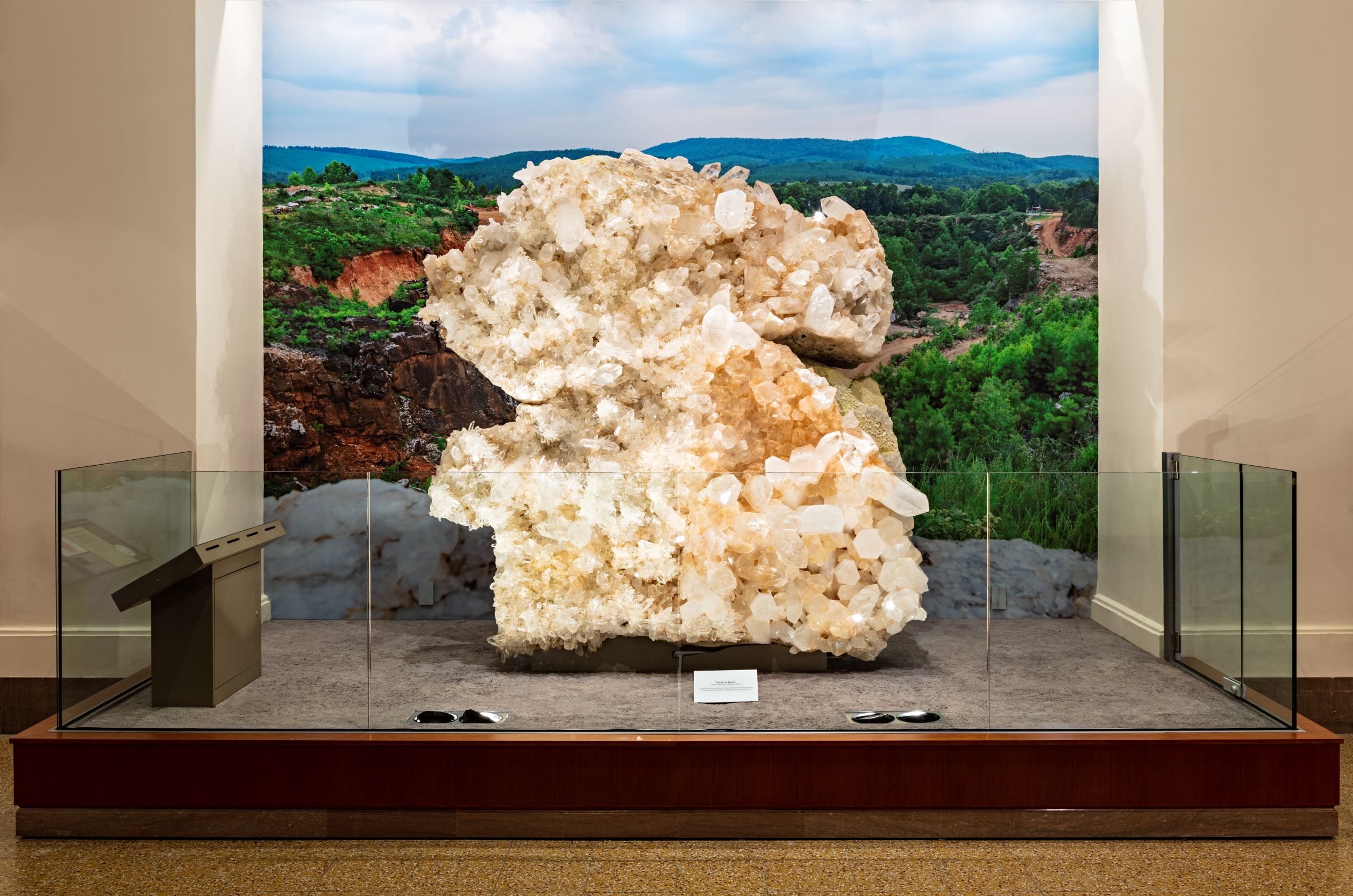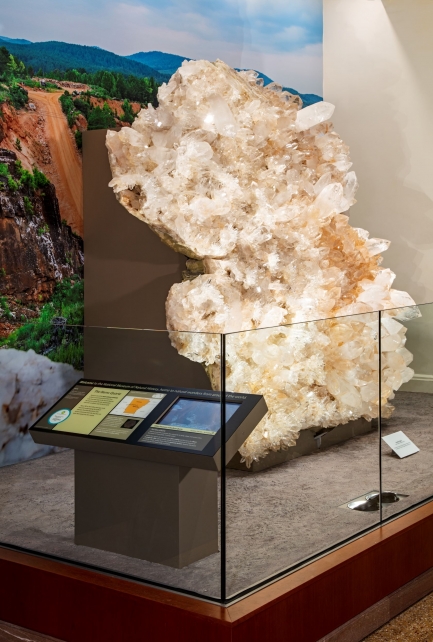The Smithsonian’s National Museum of Natural History unveiled a stunning slab of quartz crystals today, Oct. 27. This is among the largest examples of quartz specimens on display in any museum in America.
Massive Slab of Quartz Crystals Goes on Public View at Smithsonian
The Smithsonian’s National Museum of Natural History unveiled a stunning slab of quartz crystals today, Oct. 27. This is among the largest examples of quartz specimens on display in any museum in America. At 7 feet tall and more than 8,000 pounds in weight, the gigantic cluster of thousands of sparkling crystals stands in the front gallery, adjacent to the museum’s historic north entrance. The quartz was discovered at the Coleman Mine in Arkansas’ Ouachita Mountains in 2016. It is named the Berns Quartz in recognition of Michael and Tricia Berns, whose philanthropic support brought the specimen into the museum’s collection.
“We are thrilled to have the Berns Quartz join other Smithsonian icons—the Hope Diamond, the Nation’s T. rex and Henry the elephant—on display in the most visited natural history museum in the world,” said Kirk Johnson, Sant Director of the National Museum of Natural History. “The specimen’s research value is significant, but its dramatic appearance makes it one of the most striking visual experiences in the museum.”
From sandstone to gemstones, quartz is everywhere. In its natural form, it is the second most common mineral in Earth’s crust and is the mineral behind the well-known gems amethyst and citrine. In its synthetic form, it is a key ingredient in watches, radios and other electronics. Quartz crystals look like hexagonal prisms that culminate in a point. Their shape comes from how their atomic building blocks, silicon and oxygen, lock into precise, repeating arrangements.
“A cluster of clear quartz crystals of this size and quality is extraordinarily rare,” said Jeffrey Post, mineralogist and curator-in-charge of gems and minerals at the museum. “Quartz is one of the basic building blocks of our Earth, and we hope this amazing specimen will inspire a sense of awe in people and excite them to learn more about our world.”
About the National Museum of Natural History
The National Museum of Natural History is connecting people everywhere with Earth’s unfolding story. It is one of the most visited natural history museums in the world. Opened in 1910, the museum is dedicated to maintaining and preserving the world’s most extensive collection of natural history specimens and human artifacts. The museum is open Wednesday through Sunday from 10 a.m. to 5:30 p.m. Admission is free. For more information, visit the museum on its website, blog, Facebook, Twitter and Instagram.
# # #
SI-336-2021
Randall Kremer
202-360-8770
Note to editors: Photos of the Berns Quartz’s arrival and display are available via Dropbox (password: quartz). News media use of these photos in relation to the Berns Quartz is permitted with attribution.








